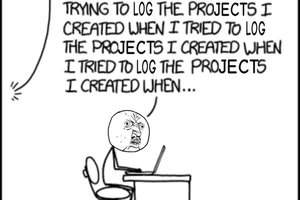MOTIVATION
The project consists of a web page with some embedded javascript to manage the presentation. Everything happens in the browser, no compile or install is needed. Just clone the project and go.
On first run, you will be asked to choose a project category for the project you want to finish: the system will use words and images from this category for the slide show.
Then, once a day for 30 days, run the web page in your browser as soon as possible after waking.
A daily run consists of a slide show of words and images from your project category, to highlight those ideas in your mind. The slide show takes about a minute.
While you watch the slideshow, look for a specially displayed word: a different color, a different placement, bigger, smaller, crooked, or whatever. The method changes with each run, but it will be obvious when you see it. After the slide show, you will be asked to identify the special word.
After the slideshow you might be given some lesson text to read.
The lessons describe psychological aspects of motivation, and give suggestions for how these might be improved. Knowing how motivation works will help you make changes that will increase your own motivations.
Sometimes the program will ask you to do a small task such as thinking about an issue or writing a todo list. The tasks work with the lessons to implement the psychological techniques, and help you gain motivation.
After 30 days you should see an increased motivation for finishing your projects.
Good luck with your projects!
 Peter Walsh
Peter Walsh



 Jeff Haag
Jeff Haag
 Alexander
Alexander
 Lorin Briand
Lorin Briand
 Paul McClay
Paul McClay
> This program uses psychological methods to increase your motivation for completing projects. Run it once a day for 30 days, and you should see an improvement in project motivation.
Sounds like a miracle to me. Does it really work?